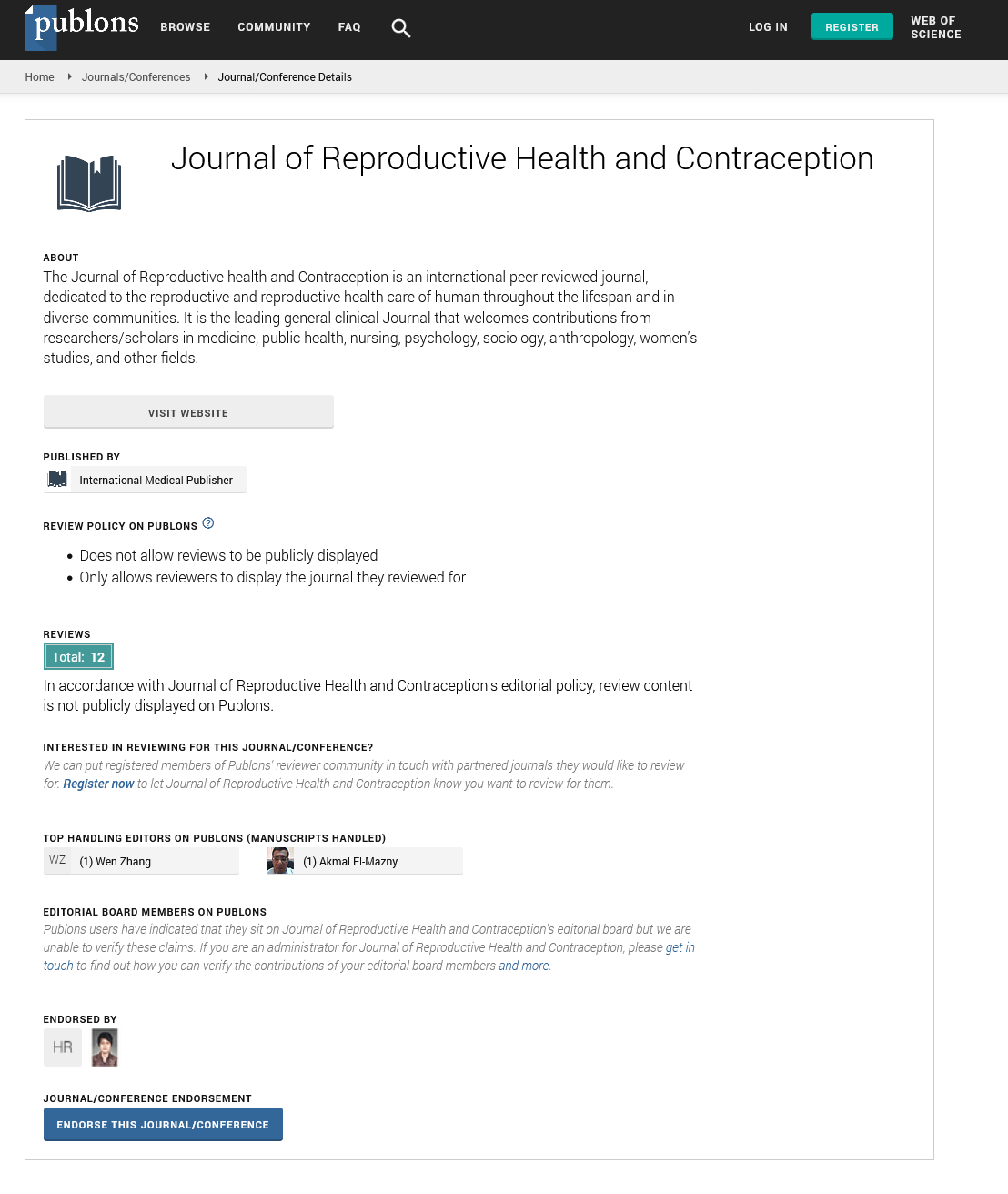Abstract
Contraceptive Use among Senior High School Students at Cape Coast Metropolis in the Central Region of Ghana: A Cross Sectional Survey
Background: Contraceptive knowledge and use among adolescents across a number of developing countries reveals some unexpected regional patterns in sexual activity and marriage in the majority of the countries. The purpose of the study was to examine contraceptive use among senior high school students in the Cape Coast metropolis in the central region of Ghana.
Methods: The study design was a cross-sectional survey. Four hundred students were selected from three senior high schools through the multi-stage sampling method. Selfadministered structured questionnaire was used to collect the data. Cross tabulations and Chi-square were statistical techniques used to analyse the data. Data collected were processed using SPSS version 21.
Results: Four hundred students were sampled for the study. Majority of the students were in form two (51%), 15-19 years (84.7%), male (51.7%), christians (96.5%) and were living with both parents (70.5%). About 73% of their fathers had tertiary level education. Fifty five percent of all the respondents were taught about contraceptives in class. Among those who had ever had sexual intercourse, 25% of them used contraception the last time they had sexual intercourse. Seventy seven percent of the females and 59% of the males used condom. Fifty six percent of the females and 47% of the males got the contraceptives from the pharmacy or chemical shop. From the Chi square analysis, form (p=0.001), sex (p=0.000) and level of fathers education (0.000) were statistically significant to the use the contraceptives among the students.
Conclusion: Most of these sexually active senior high school students do not use contraception during sexual intercourse. The implication is that these students are at risk of contracting STIs as well as exposed to the risk of unplanned pregnancy which can lead to abortion and or school dropout. Youth friendly health services must be provided at places that will be accessible them. To facilities and safe spaces should be created for adolescents in order to improve access to SRH services for them.
Author(s): Christiana Asiedu*
Abstract | Full-Text | PDF
Share this

Google scholar citation report
Citations : 201
Journal of Reproductive Health and Contraception received 201 citations as per google scholar report
Journal of Reproductive Health and Contraception peer review process verified at publons
Abstracted/Indexed in
- Google Scholar
- China National Knowledge Infrastructure (CNKI)
- WorldCat
- Publons
Open Access Journals
- Aquaculture & Veterinary Science
- Chemistry & Chemical Sciences
- Clinical Sciences
- Engineering
- General Science
- Genetics & Molecular Biology
- Health Care & Nursing
- Immunology & Microbiology
- Materials Science
- Mathematics & Physics
- Medical Sciences
- Neurology & Psychiatry
- Oncology & Cancer Science
- Pharmaceutical Sciences


